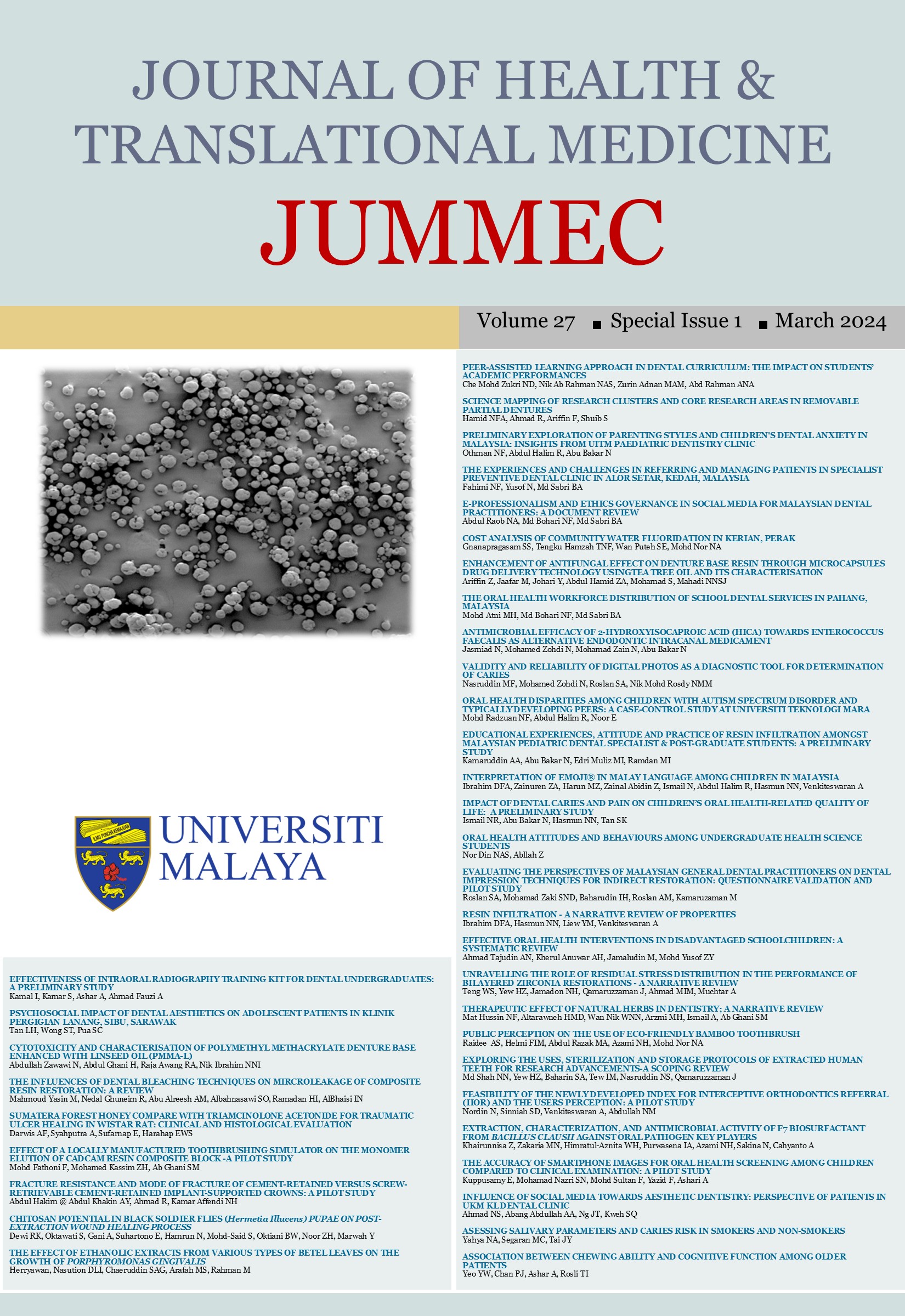EFFECTIVE ORAL HEALTH INTERVENTIONS FOR DISADVANTAGED SCHOOLCHILDREN: A SYSTEMATIC REVIEW
Received 2024-02-21; Accepted 2024-03-04; Published 2024-03-18
DOI:
https://doi.org/10.22452/jummec.sp2024no1.18Abstract
Children from rural and low socioeconomic backgrounds face persistent inequalities in oral health, specifically dental caries, and periodontal diseases. This review aimed to identify effective interventions for promoting oral health and preventing oral diseases among primary schoolchildren from rural and low socioeconomic backgrounds. We conducted a comprehensive search using PubMed, MEDLINE and CINAHL via EBSCOhost, Cochrane Library, Web of Science, and Dentistry and Oral Sciences databases for English publications from 2000 to 2022. We included both randomised and non-randomised controlled trials that evaluated promotive and preventive oral health interventions targeting primary schoolchildren from rural and low socioeconomic backgrounds. Measured outcomes encompassed changes in dental caries status, periodontal disease status, oral hygiene status or practices, sugar consumption, or smoking behaviours. Two reviewers independently screened the articles, performed data extraction using a standardised form, and assessed the risk of bias using the Cochrane Risk of Bias 2 (RoB 2) and Risk of Bias in Non-randomized Studies - of Interventions (ROBINS-I) tools. Given the substantial heterogeneity, a narrative analysis was undertaken. Of the 35 included studies, the interventions identified as effective were health and oral health education (n=20), establishment of school or community health policies (n=5), fissure sealants (n=4), professionally applied topical fluoride (n=10), supervised toothbrushing (n=7), provision of free toothbrush and toothpaste (n=1), and fluoride mouth rinse (n=2). These interventions were found to be effective in addressing caries (n=15), periodontal disease (n=2), oral hygiene (n=2), sugar consumption (n=6) and tobacco use (n=2). However, many of the included studies have a high risk of bias. Despite the risk, these findings represent the best available evidence and serve as insights into effective interventions for disadvantaged schoolchildren. Future well-designed studies are required to provide high-quality evidence. The findings indicate that a comprehensive intervention involving both clinical prevention and oral health promotion can significantly improve the oral health of disadvantaged primary schoolchildren.
Downloads
Downloads
Published
Issue
Section
License
All authors agree that the article, if editorially accepted for publication, shall be licensed under the Creative Commons Attribution License 4.0 to allow others to freely access, copy and use research provided the author is correctly attributed, unless otherwise stated. All articles are available online without charge or other barriers to access. However, anyone wishing to reproduce large quantities of an article (250+) should inform the publisher. Any opinion expressed in the articles are those of the authors and do not reflect that of the University of Malaya, 50603 Kuala Lumpur, Malaysia.


